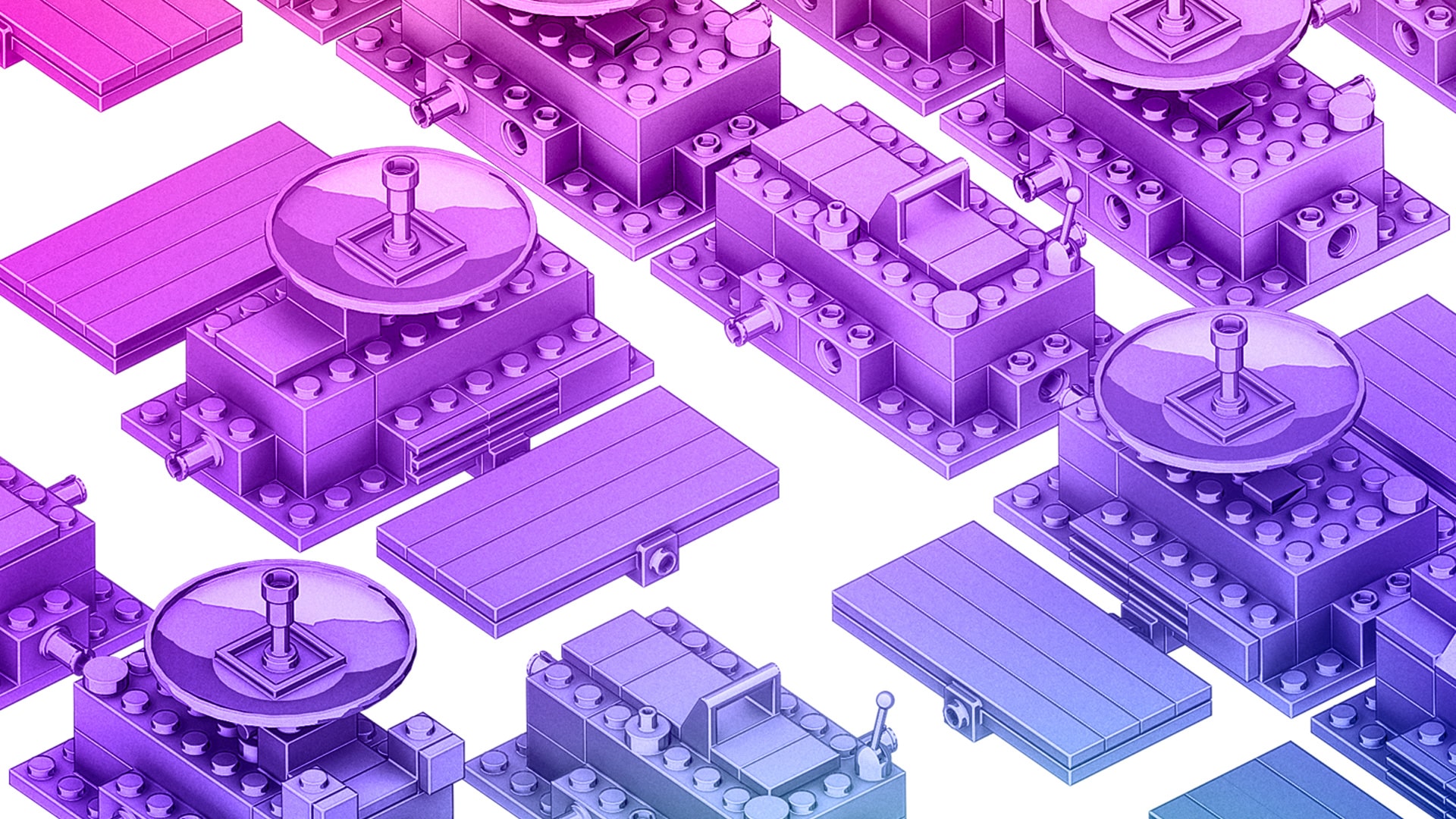Downward pricing pressures and a glut of HTS capacity have outpaced increasing demand for connectivity in the SATCOM sector, leading many operators to consider alternative technical and operational options. As industry trends converge, the need for a less capital-intensive operating model with reduced reliance on long-term assets and forecasting is becoming increasingly apparent. This article explores how modular satellite assets are poised to disrupt the industry by addressing critical underlying problems facing the sector.
Satellite Communications in the 21st Century
The launch of THAICOM 4 (IPSTAR 1) in 2005 marked the beginning of a new age in satellite communications (SATCOM), as the telecommunications world was introduced to High-Throughput-Satellites (HTS) for the first time[1]. In the 15 years since THAICOM 4 launched, more than 25 HTS have come online around the world, increasing overall satellite communications capacity by a factor of more than 3x[2]. ]. In just a single launch, ViaSat-1 introduced more capacity to the North American market than all other commercial satellites at the time combined[3].
The resulting market reconstruction in the years since THAICOM 4 has been considerable; operators that have been a mainstay of the satellite communications sector since its inception are now scrambling to find new partners and business models to ensure their long-term stability. Attempting to reinvent themselves in the age of HTS, these firms have turned to mergers and acquisitions, new spectrum bands, satellite servicing, small satellites, LEO mega-constellations, and a variety of other solutions. Of all the new concepts, one in particular stands out as a radical new approach to satellite infrastructure that has the potential to create significantly more sustainable SATCOM business models: modular satellites.
Geo-synchronous Modular Satellite Platforms
Although modular satellites are still largely theoretical, advances in core enabling technologies such as satellite servicing, in-orbit assembly, and spacecraft connectors are making this new architecture more reality than science fiction. The concept of operations for a modular satellite communications platform is simple – in a typical scenario, this type of asset is comprised of only two elements:
- A single, highly-capable base spacecraft (referred to as a Support Module) for providing station station-keeping, power generation, propulsion, etc.
- Multiple communications payload modules that can be easily attached to the base platform and receive power, fluid, data, etc.
Aggregating these assets in orbit is also relatively straight forward: modules can be launched either in batches or individually into a Geosynchronous Transfer Orbit (GTO), where they are easily picked up by a satellite servicing spacecraft. The satellite servicer then ferries the independent modules to the larger platform. Once attached, the standalone module can begin routine operations the same way a monolithic asset would.
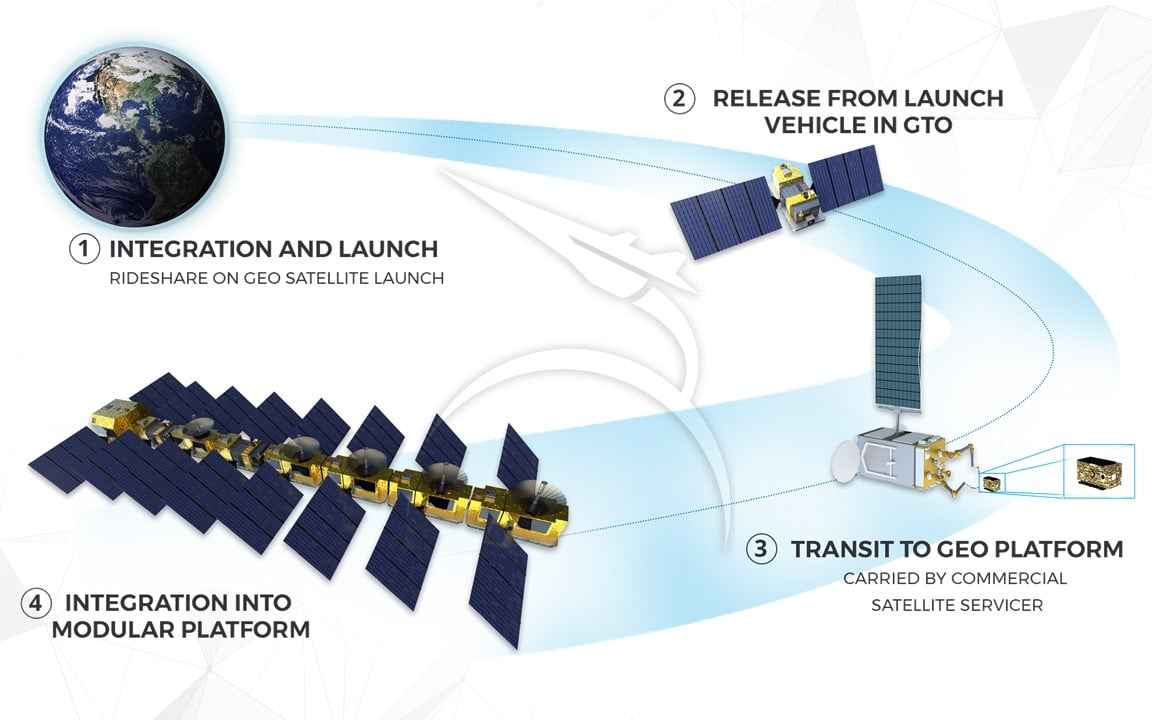
An Industry Ripe for Disruption
Understanding precisely why this new type of satellite asset has the potential to be so disruptive requires a deeper dive into the satellite communications industry. In recent years, explosive growth in content distribution, a glut of HTS capacity, and a shift away from broadcast satellite services have all forced firms to re-evaluate their corporate strategies in the new age of connectivity.
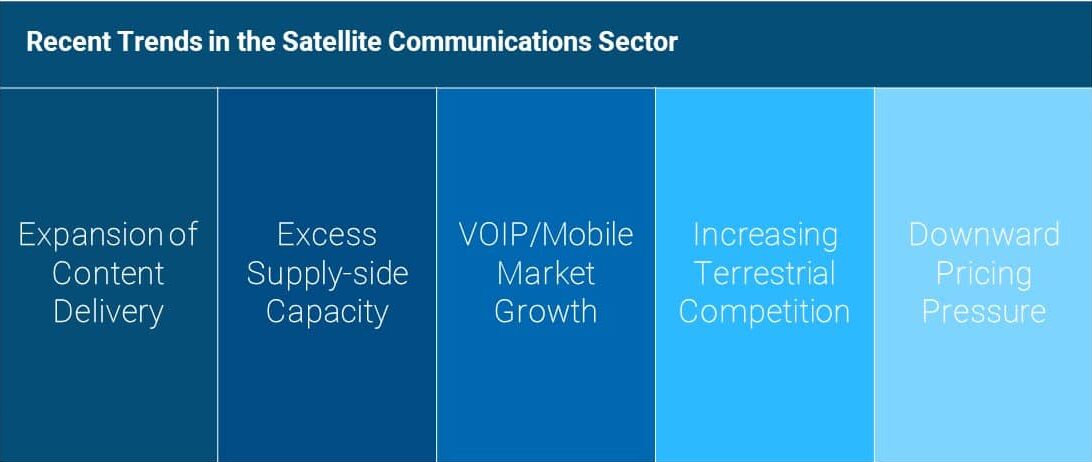
Even as operators wrestle with current trends and begin to adjust to the ‘new-normal’ in a post-HTS world, certain challenges remain exactly as they were 20 years ago. Evaluating financial disclosure statements from some of the largest firms in the sector reveals that these challenges are so inherent to the nature of the SATCOM business model that no amount of industry change has yet been able to resolve them[4,5,6,7]:
- The SATCOM business is capital intensive by nature, requiring firms to make long-term capital expenditure decisions
- Firms must forecast demand far into the future when that demand may or may not be realized
- Satellites are subject to a large amount of operational risk during launch and in-space operations
- Operators are subject to ITU regulations requiring orbital locations to be occupied and satellites to be operational to maintain licensing
The Business Imperative for Modularity
Modular satellite platforms stand poised to substantially alter the operating environment by resolving some of these most basic threats that are inherent to the SATCOM industry. For starters, as only a single module is required to begin operations, modular satellites can significantly reduce upfront capital expenditures for operators and allow them to make incremental expansion decisions based on actual market demand rather than long-term forecasts. Operators can additionally react in-turn to the gain or loss of major customers, reallocating capacity across assets as needed. Figure 3 provides an overview of the core features of the modular satellite value proposition.
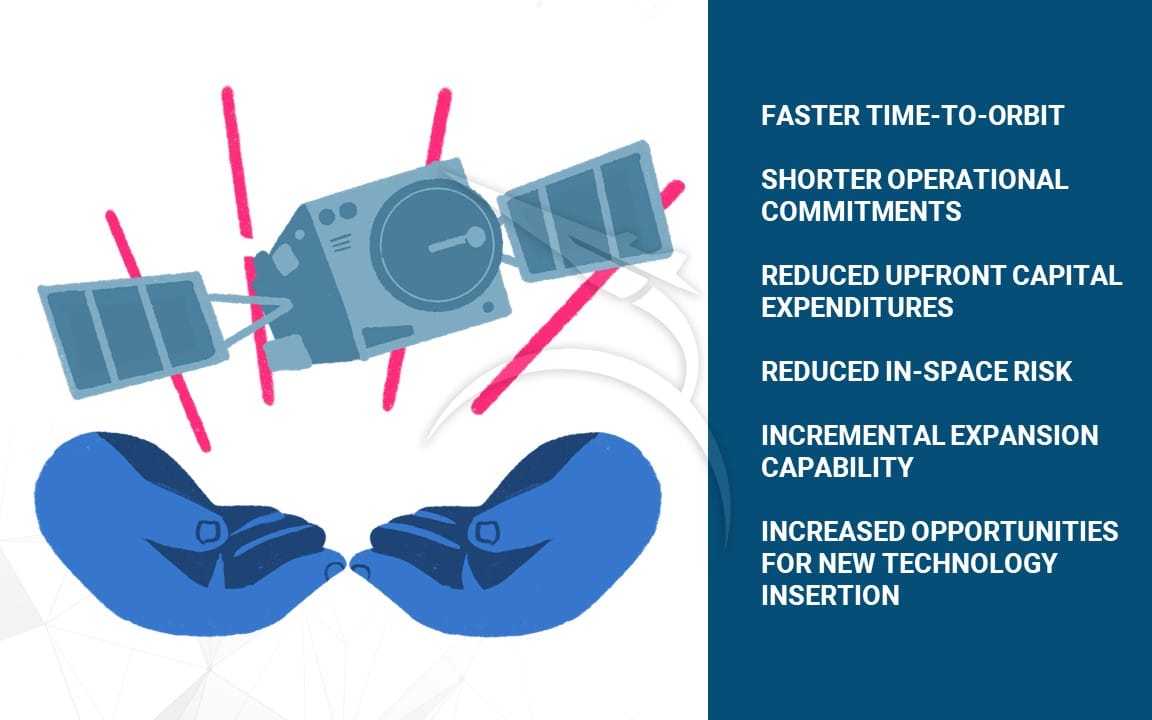
While the cost of producing and operating a large amount of discrete, standardized modules is likely to eclipse that of a single, consolidated satellite, the operational benefits of these types of modular platforms are substantial. Reduced CAPEX and associated debt-postures/cash reserves, the ability to dynamically scale capacity offerings with customer demand, and the ability to quickly reach orbit in the event of a failure or new market entry address major underlying challenges present within SATCOM operating models. In all, the value of modular satellite platforms lies not in its ability to reduce overall cost, but in its ability to resolve inherent threats facing SATCOM operators.
To better understand the financial impact of the switch to modular satellite assets, SpaceWorks conducted research to compare hypothetical return scenarios for both a traditional and a modular satellite venture. Interestingly, these results indicate that a modular satellite platform does not provide more advantageous financial returns than its traditional HTS counterpart. SpaceWorks research suggests that across nearly all metrics, a conventional HTS system would outperform a modular one by approximately 5-10%. When considering the all-important Net Present Value metric, the traditional HTS system is projected approximately 8% higher than the modular system.
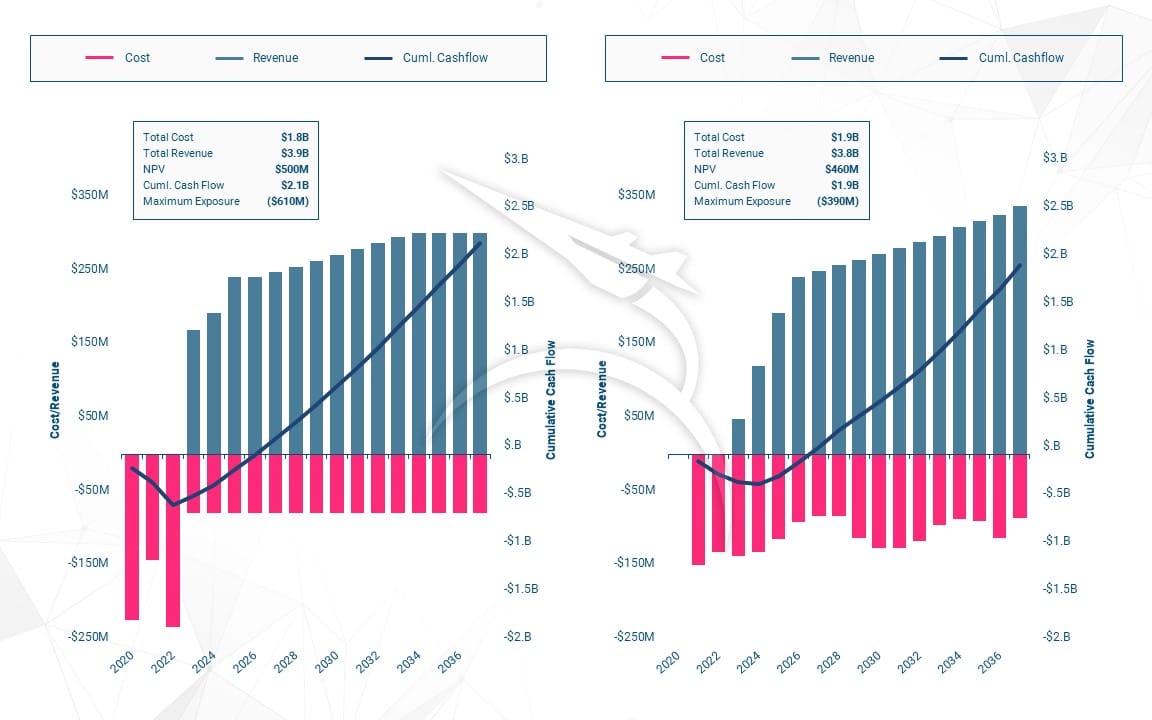
These results, however, only hold true when demand behaves as predicted. If demand is between 90% and 120% of expected, then, yes, the traditional HTS system yields a more attractive NPV than its modular platform counterpart. Beyond this range, the ability of the modular platform to dynamically scale with customer demand becomes apparent as the modular platform begins to yield more attractive venture NPVs, as seen in Figure 5. These findings have an important implication for those satellite operators considering modular platforms: firms must have at least 80% confidence in their demand estimate to justify using a traditional HTS system over a modular platform.
In the case of a rapid spike in demand, traditional HTS systems are left with little recourse other than to launch an entirely new asset at potentially great expense to the operator. Further, the firm would again face the question of predicting market demand for the second asset and potentially missing the mark. The modular system, on the other hand, can easily accommodate the additional market demand by adding more modules. Of perhaps greater interest is the case of lower than expected demand. In this scenario, there is no way for the HTS system to recover the costs of oversupply; if demand is less than 90% of what was predicted, the modular platform is practically guaranteed to provide a more financially attractive return.
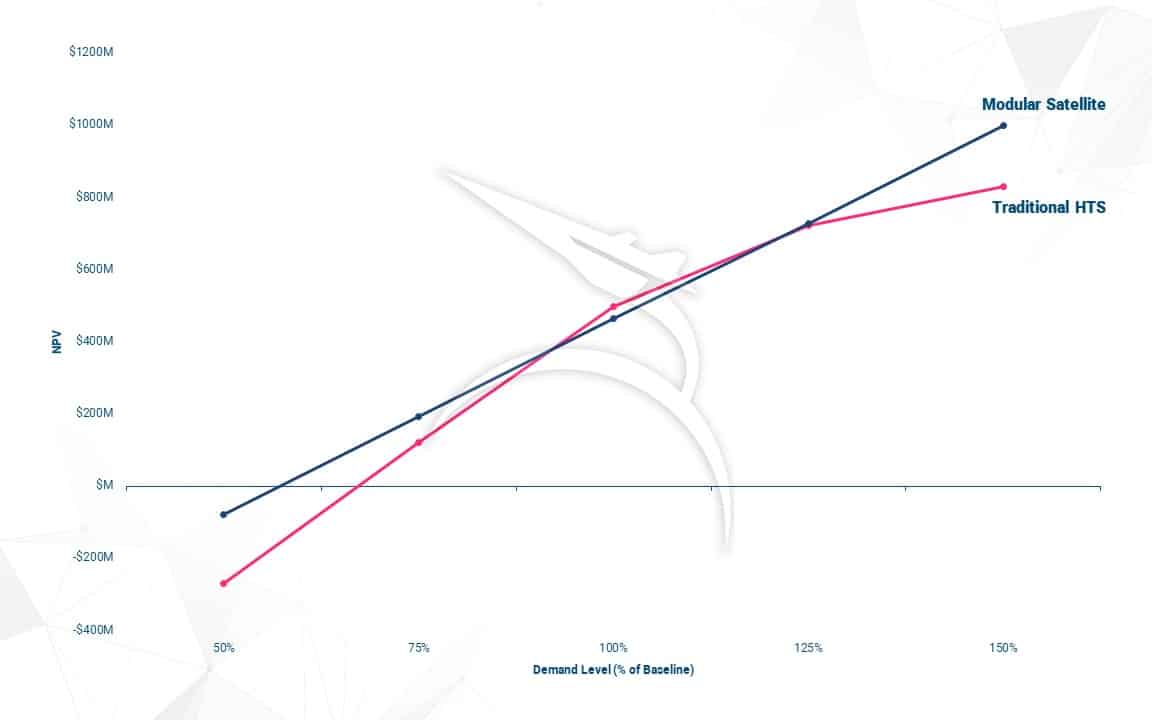
Conclusions
As eccentric billionaires and return-hungry venture capitalists make lofty promises about transforming the future of space exploration, it is essential to remember that satellite communications has been the foundation of the commercial space industry for nearly 40 years[8]. The longevity of the sector has historically been due, at least in part, to its ability to embrace innovation. The explosion of capacity supply and demand, increasing terrestrial competition and downward pricing pressure, and a shift away from broadcast satellite services are forcing the SATCOM sector to return to its innovative roots. To ensure continued success in the 21st century, firms must seek out new, transformative technical and operational models to ensure future growth. While much of the sector has turned its attention to satellite servicing, mission extension, LEO constellations, and a plethora of other avenues, few have made any substantial investments into modular satellite technology (the lone exception being the ever-unconventional Thomas Choi and Saturn Satellite Networks)[9].
Despite the lack of enthusiasm from industry, these types of modular satellite platforms stand to create transformational change across the sector and have the potential to resolve a number of underlying challenges in SATCOM operator business models. The value proposition presented by modular satellites includes faster time-to-orbit, reduced capital expenditures, the ability to scale with customer demand incrementally, and increased opportunities for new technology insertion. While the cost of such systems may, at least initially, outweigh that of comparable traditional systems, the financial return associated with modular platforms has significant upside. Particularly in volatile demand environments, SpaceWorks research suggests that modular satellite platforms can outperform traditional satellite assets by as much 25 – 50%.
As for why investment to-date in this area has been so minimal, it is hard to say. Perhaps already risk-heavy satellite operators don’t feel they can take on the additional uncertainty associated with this type of unproven technology, or, perhaps, satellite original equipment manufacturers just haven’t made it available. Regardless, in the modern business climate, the idea of investing hundreds of millions of dollars into a single, monolithic asset meant to last for 15 – 20 years seems archaic. Competing in this new era of connectivity with increasing pricing pressure and ever-changing customer demands has created a business imperative for modularity, and it is up to the satellite communications sector to embrace it.
Article by:
Caleb Williams | Lead Economic Analyst
Ushna Ahmed | Junior Economic Analyst

